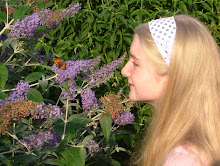I was captivated by the scraggly illustrations of 'Uncle Montague's Tales of Terror' in the library, produced by David Roberts, that were somewhere between Ronald Searle, Edward Gorey and Quentin Blake. The book itself is a series of short stories with a framing narrative, each story told by the eccentric Uncle Montague to his (insert indeterminate number of greats) nephew Edward in his creepy house in the woods. Every story is punctuated by Edward's realisation that an object from the story, often irredeemably lost within the story itself, is here, on the wall as a trophy (or a warning...)
There are (un)healthy doses of Edgar Allan Poe in 'Uncle Montague...', as well as a clear influence by the Victorian children's exemplar books which meted terrible and extraordinary punishments to any children who disobeyed their elders. Every character in the stories has an identifiable transgression (except maybe the final short story, which is also the creepiest) and each pays in an appropriate way. Priestley admirably weaves subtle horror with a faux-Victorian setting to build up an atmosphere that fully lends itself to the twist in the tale so common in ghost stories of the time.
Priestley's prose isn't action-packed or thrumming with anticipation, and sometimes I felt the denouement fell a little flat as a result, but the style Priestley pastiches effectively is instead full of creeping terror and things half-seen out of the corner of your eye. This is not the place for oh-it-was-only-a-cat scares (unless they are of the Silent Hill double whammy variety!) The stories grow more grotesque and scarier as they go, each introducing more explicit horrors, until we reach the climax of the book: the framing narrative itself. I thought Priestley overdid the ghostly phenomena at Uncle Montague's house slightly, but perhaps it is just that, as the stories slowly build pace, the framing narrative must build faster, since it only has the bits between the tales to work in. Trust me, hang in there. It's totally worth it.
This isn't the sort of book to become an instant worldwide classic like His Dark Materials or Harry Potter, but it's really worth checking out. It's the sort of odd little book you stumble upon and that piques your interest on its own terms. I find that's a common thing with short story anthologies, especially, but I hope that in the future children (and maybe adults like me too!) will dig this out of the rows of Twi-likes and find joy in a horror style that never truly goes out of fashion.
Subscribe to:
Post Comments (Atom)

No comments:
Post a Comment